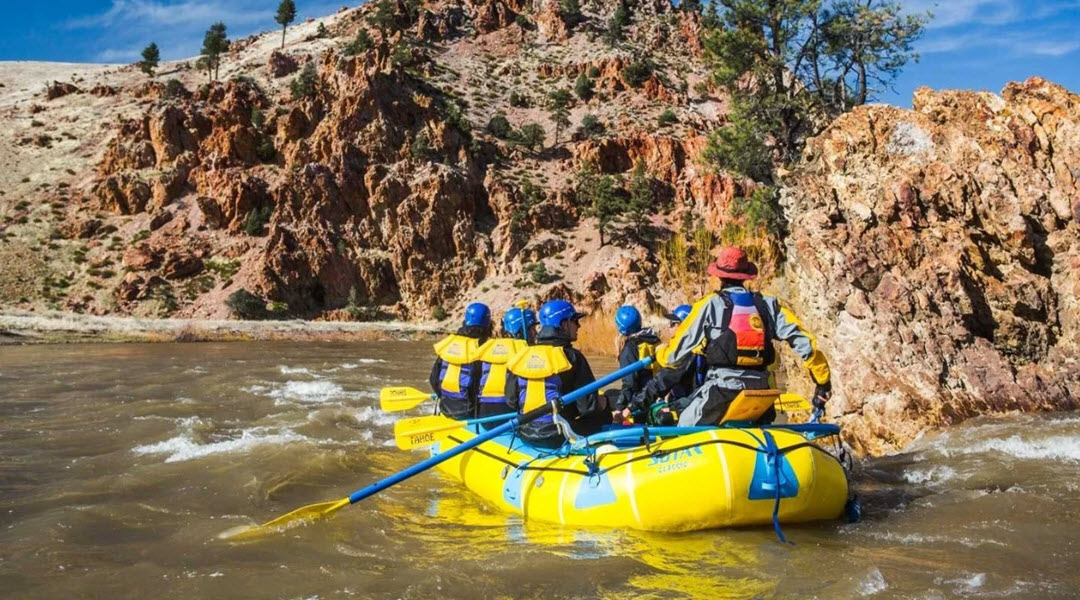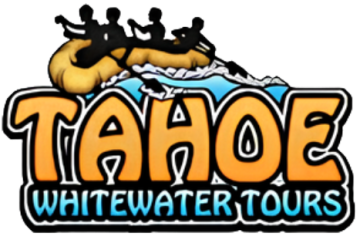Raft the Scenic East Fork Carson River on an Action-Packed Adventure

Why Whitewater Raft East Fork Carson River
You’ll feel your heart thump as you tackle East Fork Carson‘s wild waters. Your paddle slices through Class III-IV rapids scattered across 13 breathtaking miles.
When you hit Horsetail Falls, your knuckles tighten instinctively while adrenaline floods your veins. Sierra Nevada peaks tower above you, reaching beyond 10,000 feet as you navigate the Humboldt-Toiyabe wilderness.
Top 5 Rapids to Conquer on the East Fork Carson
Your river journey kicks up as you float downstream – each bend reveals tougher challenges than the last. Five standout spots define why rafters keep coming back year after year.
1. Horsetail Falls (Class IV)
You drop six vertical feet before crashing into a maze of boulders that demands split-second teamwork. Hit this in May when snowmelt turns it into a thundering beast. Your guide’s voice cuts through the roar as you approach the edge – then suddenly, you’re airborne, plunging into churning foam below.
2. Meatgrinder (Class III+)
Your arms burn fighting relentless waves that hammer your raft across 300 yards of chaos. Locals call this the true test of your river skills. Keep paddling hard through that first wave train, or you’ll get stuck spinning in powerful recirculating holes instead of punching clean through.
3. Twin Bridges (Class III)
You glide under historic 1930s bridges before hitting a perfect V-channel that funnels into standing waves. Everyone gets soaked as the water crashes over the bow. This section stays excellent from April through June, guaranteeing thrills no matter when you book your trip.
4. Splash and Giggle (Class II)
Your kids, starting at 8 years old and older, will love these playful waves and gentle obstacles, creating plenty of splashes without the scary factor. Many guides use this section as a classroom – you’ll master paddle commands here before tackling bigger challenges waiting downstream.
5. The Narrows (Class IV-)
Your skills face the ultimate test when the entire river squeezes between towering rock walls. Only advanced trips tackle this technical challenge, where perfect coordination and quick reactions determine success or failure. The finale demands teamwork and expert guidance to navigate safely.
Who Should Raft the East Fork Carson River?
The East Fork Carson welcomes a diverse range of adventurers, making it an ideal destination for multiple types of river enthusiasts. Your family will create lasting memories here, as most trips accommodate children aged eight and up, though minimum age requirements vary by outfitter and water levels.
Friend groups and adventure seekers particularly enjoy the East Fork, with most rafts comfortably holding 4-6 people, creating the perfect size for a close-knit team.
Fitness enthusiasts appreciate the full-body workout that rafting delivers, burning between 300-400 calories per hour of paddling, according to CDC activity calculations. Meanwhile, nature lovers are rewarded with abundant wildlife sightings, including majestic bald eagles soaring overhead, curious mule deer along the shoreline, and rainbow trout darting beneath your raft in clearer sections.
When to Go: Seasonal Conditions & Water Flow
Selecting the optimal time for your East Fork Carson adventure dramatically impacts your experience on the river. Spring snowmelt from April through June creates powerful flows reaching up to 3,000 CFS, attracting advanced rafters seeking maximum thrills. The river swells with crystal-clear mountain runoff, transforming moderate rapids into roaring features that demand respect and skill.
The summer family season from July through August delivers more moderate conditions with manageable flows between 800-1,200 CFS. This period offers the highest trip availability and warmer air temperatures, creating ideal conditions for families and first-timers. The gentler water reveals more of the riverbed’s features, allowing you to appreciate the unique geology of the canyon.
Fall represents the shoulder season, with limited September runs available depending on water releases. The trade-off for fewer available trips is significantly reduced crowds, providing a more secluded wilderness experience. Water temperatures remain cool throughout the season (45-55°F from April through June), with outfitters providing wetsuits to ensure your comfort.
Remember that a permit system operates from May 15th through September 30th, with bookings managed through Alpine County. Securing your spot early guarantees access during peak periods when the combination of ideal water levels and pleasant weather creates high demand for this spectacular river experience.
Safety & Preparation Tips for Your Trip
Your East Fork Carson adventure balances excitement with carefully managed risk, thanks to comprehensive safety protocols followed by professional outfitters. Every commercial trip is led by ACA (American Canoe Association) certified instructors who undergo rigorous training in swift-water rescue techniques and wilderness first aid. These guides begin each journey with detailed safety briefings that prepare you for the challenges ahead.
All essential safety gear comes included with your trip, including Coast Guard-approved life jackets fitted to your specific size, helmets designed for whitewater impacts, and splash gear appropriate for the day’s conditions. The physical demands require moderate stamina, particularly during the one-hour safety orientation, which includes practicing paddling techniques before hitting the main rapids.
Sierra Nevada weather patterns create summer temperatures averaging 70-85°F with UV index readings frequently exceeding eight on clear days. Quality outfitters provide mineral-based sunscreen and encourage frequent application throughout your journey. Protecting the pristine river environment remains a priority through strict pack-in/pack-out policies, and guides will instruct you on avoiding fragile riparian zones during shore stops.
Your preparation directly influences both the safety and enjoyment of the river. Wearing quick-drying synthetic clothing beneath provided safety gear, securing eyeglasses with retention straps, and following guide instructions precisely maximizes protection while allowing you to focus on the incredible experience of challenging one of California’s most rewarding whitewater rivers.
